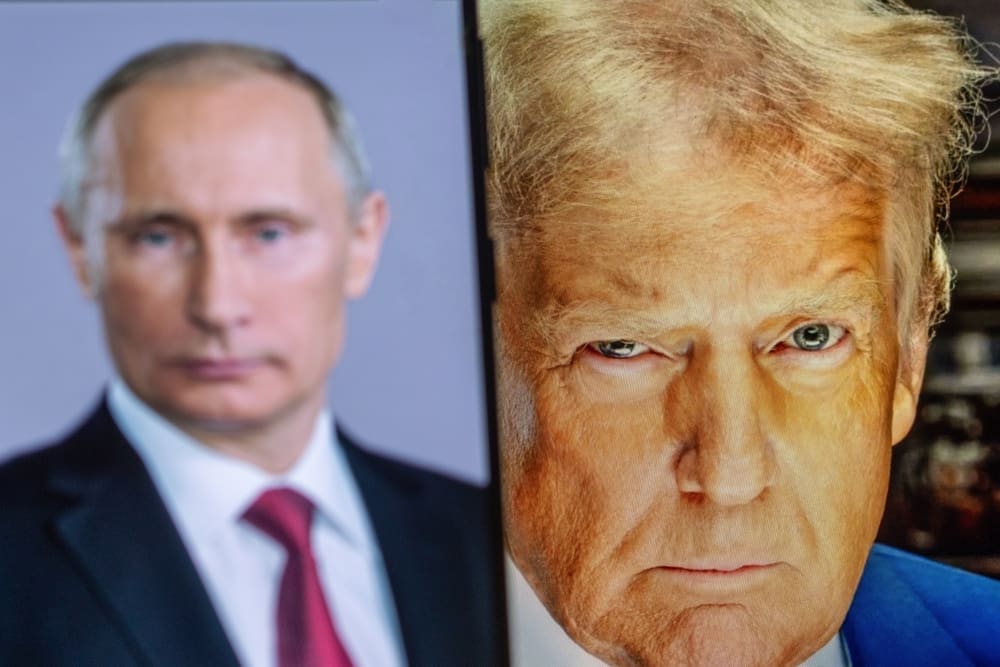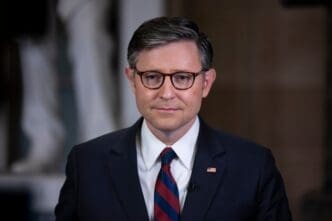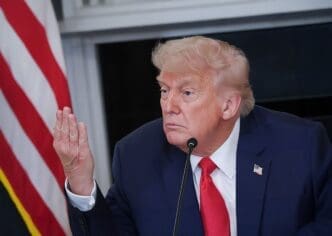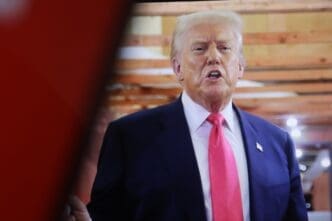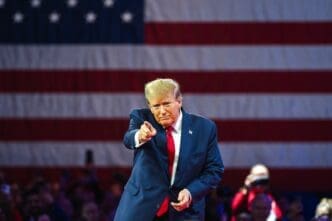WASHINGTON – In the turbulent world of Donald Trump’s foreign policy, a dramatic and whiplash-inducing shift is underway. After months of pursuing a diplomatic strategy built on personal appeals to Vladimir Putin, President Trump has abruptly reversed course, threatening the Russian president with crippling new sanctions and greenlighting billions of dollars in advanced weaponry for Ukraine.
But as this new, more muscular policy takes shape, the White House is simultaneously engaging in a remarkable exercise in historical revisionism. President Trump, who for months has publicly and repeatedly vouched for Putin’s trustworthiness and desire for peace, is now insisting he was never fooled by the Russian leader. This attempt to rewrite his own record of deference to Putin creates a jarring split-screen effect, where the administration’s tough new actions are accompanied by a narrative that strains credulity, raising critical questions about the conviction and durability of the new strategy.
The turn against Putin has been sharp. After publicly berating the Ukrainian president just months ago, Trump this week signaled a new era of “leveraged diplomacy.” Yet, even as he unveiled this tougher stance, he began to recast his past interactions with the Russian leader.
“He’s fooled a lot of people,” Trump said at the White House on Monday. “He fooled Clinton, Bush, Obama, Biden. He didn’t fool me.” In a new interview with the BBC, when asked if he trusted Putin, the president reportedly paused before replying, “I trust almost nobody, to be honest with you.”
That assertion stands in stark contrast to a long and consistent record of Trump placing his personal faith in the former KGB officer, often over the advice of his own national security team and the evidence of Russia’s actions on the ground.
Just five months ago, on February 14, Trump offered a stunningly full-throated testimonial to Putin’s credibility on the central issue of the war. “I believe he wants peace,” Trump said. “I mean, I know him very well. Yeah, I think he wants peace. I think he would tell me if he didn’t… I trust him on this subject.”
Two weeks later, when asked if he was concerned that Putin might violate the terms of a potential peace deal—something the Russian leader has done repeatedly—Trump dismissed the idea out of hand. “I think he’ll keep his word,” the president said, suggesting he felt an affinity with Putin because both had to endure the Russia investigation during his first term. As recently as April, when asked by Time magazine if Putin could make peace, Trump signaled it was likely, saying, “I think Putin will.”
Today, the president is singing a very different tune. He acknowledged on Monday that on three or four separate occasions, he believed he had a deal in place with Putin, only for the Russian leader to pull the rug out from under him and continue to bombard Ukraine.
This history of misplaced trust was at the heart of the administration’s now-infamous Oval Office blow-up with Ukrainian President Volodymyr Zelensky on February 28. During that meeting, after Vice President JD Vance signaled the administration preferred “diplomacy” to chest-thumping, a frustrated Zelensky interjected, questioning how anyone could trust Putin to engage faithfully in talks.
“We signed ceasefire” in 2019, Zelensky said, his voice rising. “All of them told me that he will never go [into Ukraine]… he broke the ceasefire, he killed our people, and he didn’t exchange prisoners… What kind of diplomacy, JD, you are speaking about?”
The exchange, which Vance called “disrespectful,” culminated in Trump again blanching at the suggestion that Putin might violate a new agreement. “ ‘What if’ anything?” Trump shot back. “What if a bomb drops on your head right now, OK? What if they break it? I don’t know. They broke it with Biden because Biden, they didn’t respect him. They didn’t respect Obama. They respect me.”
Four and a half months later, Trump’s own words betray that confidence. “I go home, I tell the first lady, ‘You know, I spoke to Vladimir today, and we had a wonderful conversation,’ ” Trump recounted on Monday. “She said, ‘Oh really? Another city was just hit.’ ”
This pattern—of placing faith in an authoritarian leader only to later reverse course when that faith is proven unwarranted—is a familiar one for the Trump presidency. Early in 2020, as the COVID-19 pandemic began its global spread, Trump repeatedly vouched for China and President Xi Jinping’s control over the outbreak. He praised China’s transparency and dismissed the idea that Beijing was covering up the virus’s spread, despite a long history of such actions and growing concerns within his own administration. Soon after, when the virus took hold in the United States, Trump would pivot to blaming China for the pandemic, with the White House accusing Beijing of the very cover-up he had previously cast doubt upon.
His history with Putin is even more extensive. Most famously, during a 2018 press conference in Helsinki, Finland, Trump appeared to side with the Russian president over his own intelligence community regarding Russia’s interference in the 2016 U.S. election. “I have great confidence in my intelligence people, but I will tell you that President Putin was extremely strong and powerful in his denial today,” Trump said, adding that he didn’t “see any reason why” Russia would have interfered. He later claimed to have misspoken, but he has continued to cast doubt on the intelligence community’s findings, which were later backed up by a bipartisan Senate investigation.
Another politician might look at this record and concede they had misjudged their counterparts. But Trump has instead chosen to suggest that it was his predecessors, not him, who were the dupes.
If you look closely, however, you can see a tacit acknowledgment of his own miscalculation. In his anecdote about the first lady, Trump casts himself as someone too focused on Putin’s pleasantries rather than his actions. It’s a subtle admission that his personal approach failed. The new policy, which threatens massive secondary sanctions and provides Ukraine with advanced weaponry, is itself the strongest evidence that the administration knows its previous strategy of relying on Putin’s goodwill was a failure.
The question now is whether this new, tougher stance will last. Trump has given Putin a 50-day window before the most severe economic punishments take effect, a significant runway for a leader who has proven adept at using negotiations to stall for time. The durability of this policy will depend on whether President Trump’s newfound conviction is a genuine strategic realignment or another temporary pivot in a presidency defined by its volatility. For a leader now trying to erase his own history of trust in an adversary, proving he won’t be fooled again will be the ultimate test.


